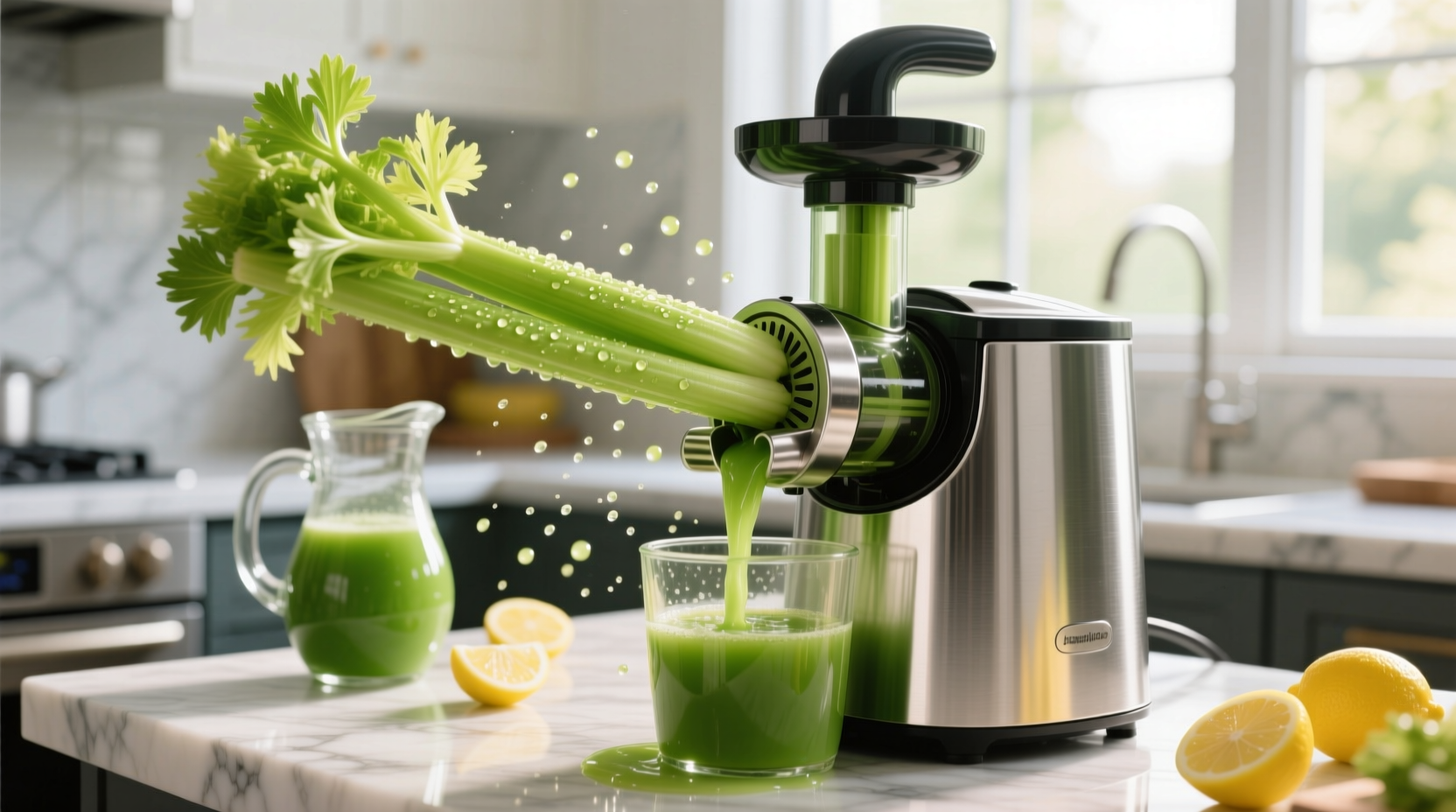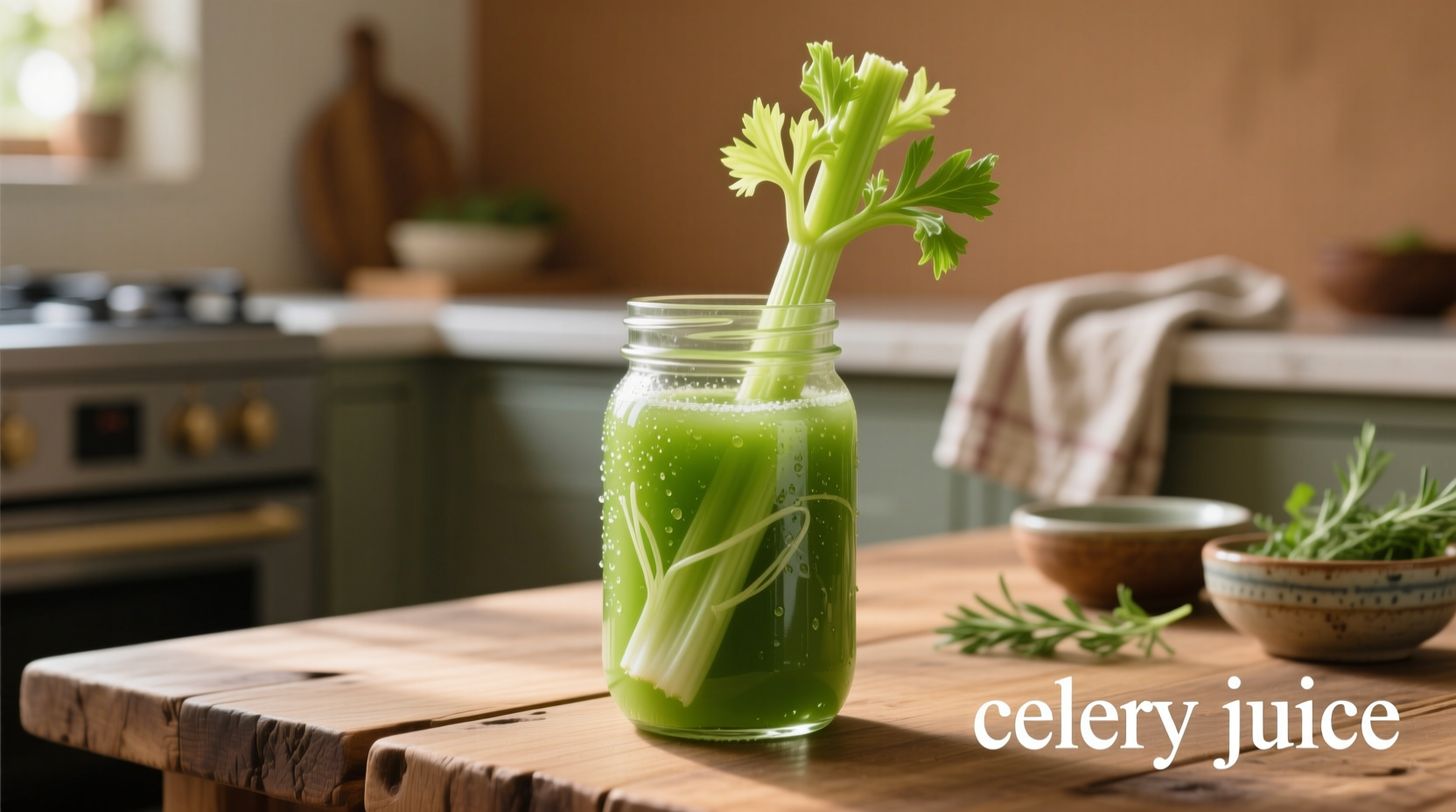Over the past decade, celery juice has transformed from a simple kitchen staple to a wellness phenomenon. Social media influencers tout it as a cure-all, while nutrition scientists urge caution about exaggerated claims. This evidence-based analysis separates fact from fiction, helping you make informed decisions about incorporating celery juice into your routine.
The Nutritional Reality of Celery Juice
Understanding what's actually in celery juice requires examining its composition. Unlike whole celery, juicing removes beneficial fiber while concentrating certain compounds. The USDA National Nutrient Database provides verified nutritional data for 240ml (8oz) of pure celery juice:
| Nutrient | Amount | % Daily Value |
|---|---|---|
| Calories | 42 | 2% |
| Potassium | 800mg | 23% |
| Vitamin K | 70mcg | 58% |
| Vitamin C | 15mg | 17% |
| Fiber | 0g | 0% |
This nutritional profile reveals both benefits and limitations. While rich in potassium and vitamin K, celery juice lacks the dietary fiber found in whole celery that supports digestion and blood sugar regulation. The removal of fiber during juicing changes how your body processes these nutrients.
Evaluating Common Health Claims
Popular wellness circles make numerous claims about celery juice. Let's examine the scientific evidence behind each:
Detoxification Claims
"Celery juice cleanses your liver" is a frequent assertion. However, the human body has sophisticated natural detoxification systems through the liver and kidneys. According to the National Center for Biotechnology Information, no evidence supports celery juice enhancing these natural processes beyond what a balanced diet provides.
Inflammation Reduction
Celery contains luteolin and apigenin, compounds studied for potential anti-inflammatory effects. A 2020 review in Food Chemistry noted these compounds show promise in laboratory settings, but human studies remain limited. Consuming whole celery provides more consistent benefits than juice alone.
Digestive Health
While celery juice proponents claim it heals digestive issues, research tells a different story. The American Gastroenterological Association emphasizes that fiber is crucial for digestive health—exactly what's removed during juicing. Whole celery provides more digestive benefits than its juice counterpart.
Practical Preparation Guidelines
If you decide to try celery juice, proper preparation maximizes potential benefits:
- Use organic celery - Conventional celery consistently ranks high on the Environmental Working Group's "Dirty Dozen" list for pesticide residues
- Wash thoroughly - Soak in vinegar-water solution (1:3 ratio) for 15 minutes to remove contaminants
- Use fresh stalks - Juice within 24 hours of purchase for maximum nutrient retention
- Consume immediately - Oxidation begins degrading nutrients within 20 minutes of juicing
- Consider adding lemon - The vitamin C helps preserve antioxidants during consumption

When Celery Juice Might Be Beneficial
Despite the hype, celery juice offers some legitimate advantages in specific situations:
- Hydration support - For individuals struggling to meet fluid needs, celery juice provides electrolytes that enhance hydration
- Nutrient absorption - The liquid format may benefit those with certain digestive conditions that impair nutrient absorption from solid foods
- Transition tool - As a stepping stone toward increased vegetable consumption for those with extremely low produce intake
Important Limitations and Considerations
Celery juice isn't appropriate for everyone. Key limitations include:
- Medication interactions - High vitamin K content may interfere with blood thinners like warfarin. Consult your physician if taking these medications.
- Caloric density - You'd need approximately 16 celery stalks to make 8oz of juice, making it less efficient than eating whole vegetables
- Nutrient imbalance - Relying on single-ingredient juices creates nutritional gaps compared to varied whole-food diets
- Cost considerations - Organic celery for daily juicing can cost $3-5 per day, which adds up significantly over time
Evidence Timeline: What Research Actually Shows
Understanding the evolution of celery research helps contextualize current knowledge:
- 1980s - Early studies identified apigenin and luteolin in celery but focused on plant biology rather than human health
- 2000s - Laboratory research began examining celery compounds' effects on isolated cells
- 2015-2018 - Small human studies explored celery extract supplements, not juice specifically
- 2020-Present - Systematic reviews highlight the lack of direct evidence supporting juice-specific health claims
This timeline reveals a significant gap between laboratory findings on celery compounds and evidence supporting specific health benefits from drinking celery juice. Most current claims extrapolate from preliminary research that doesn't directly address juice consumption.
Making Informed Choices About Celery Juice
Rather than viewing celery juice as a miracle solution, consider these evidence-based approaches:
- Use celery juice as a supplement to, not replacement for, whole vegetables
- Combine with other vegetables to create nutrient-dense green juices
- Track your body's response for 2-3 weeks if trying celery juice
- Consult a registered dietitian before making significant dietary changes
- Focus on overall dietary patterns rather than single "superfood" solutions
The most consistent research shows that diverse vegetable consumption provides greater health benefits than any single juice. Incorporating celery as part of a varied plant-based diet remains the most scientifically supported approach for long-term health.











 浙公网安备
33010002000092号
浙公网安备
33010002000092号 浙B2-20120091-4
浙B2-20120091-4